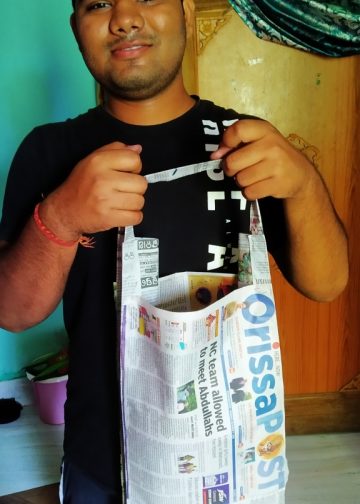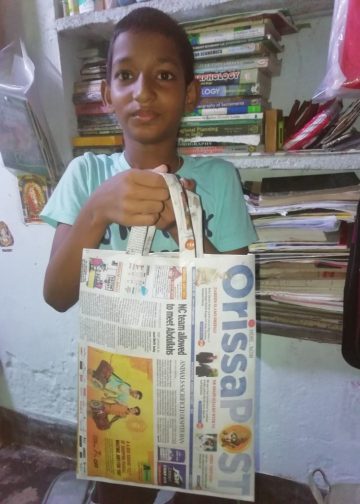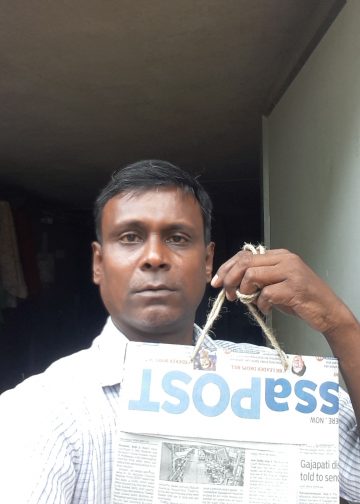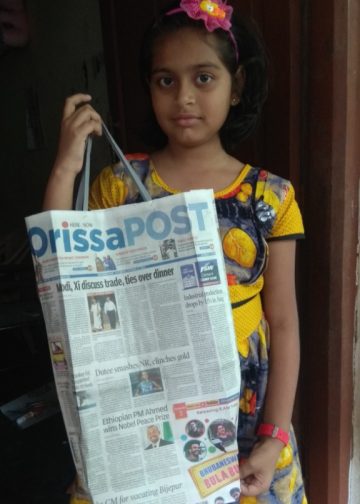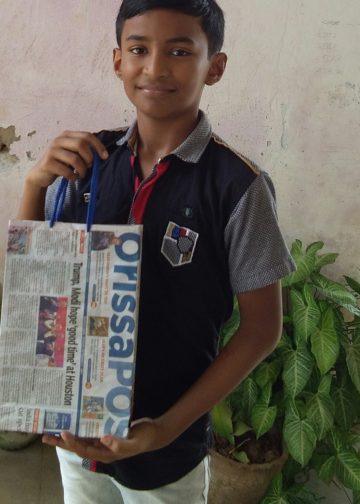Mimicry, by changing form, shape and colour, is unique to animals. Imagine you went to a Chinese or African neighbourhood and had to blend in — you had to become short, fat, change the shape of your nose, increase the number of arms or the odour your body emits. You can’t do any of these things even if your life depended on it.
But animals and insects do it easily. They change form to look like a species that predators avoid. Their scents change, their colours blend in with the background or with their prey. Their ways of surviving are nothing less than magical.
The mock viper of Asia is a harmless snake. It looks like a dangerous viper with a triangular head. The difference is that the mock viper has round pupils. True vipers’ pupils are vertical slits.
The mock viper is so clever that when threatened, it makes even its pupils to look like the slits of a true pit viper. Then, in the panic this causes, it flees.
It is not just in protecting themselves that animals need to be clever. They need to be so while hunting, too. Some fool their prey into believing they are harmless and draw them close before going for the kill.
The green lacewing larva feeds on woolly alder aphids, which ants herd. The larva plucks the white waxy wool from an aphid’s back, attaches it to its own and fools the ant shepherds into believing it is part of their flock. Once inside the circle, it eats the aphids.
The zone tail hawk feeds on live animals, but it mimics the flight of the vulture, a carrion eater. Small animals, who would normally rush for cover on seeing a hawk, are deceived by the gliding flight and vulture-like outline of the zone tail hawk and are quickly snatched up.
The cleaner fish is harmless and its function is to eat parasites on larger fish who stand in line to be attended to. The predatory sabre toothed blenny has black and blue markings just as the cleaner, and it imitates its swimming pattern and loiters at cleaning stations to dupe clients queued up for a grooming. It comes close to large fish and bites a chunk out of it before darting away.
The dusky dottyback is a 3-inch harmless looking fish that lives in Indo-Pacific coral reefs. Its normal colour varies from pink to grey, but it can change into any colour — green, yellow or brown — to match its prey. It tricks baby fish of larger species into thinking it is one of them. Then it eats them. Its favourite prey are baby damselfish. This unique talent allows the dottyback to easily approach juvenile damselfish without detection and, by the time the group is alerted, it has eaten several babies and moved to new groups of fish with new colours.
The slender trumpet fish swims vertically among the soft coral branches and changes its colour to match them. It is almost invisible to the small animals that it hunts. The marine flatworm increases its size to look like a sea slug, which is avoided by aquatic predators because it emits a poisonous and malodorous substance. The milk snake is harmless, but changes itself gradually to develop bands just as the venomous coral snake. Is this mimicry or a coincidence? Definitely deliberate mimicry, because it happens only in those regions where the milk snake and coral snake are found together. In other regions, the milk snake doesn’t look anything like the coral snake.
Young bushveld lizards in southern Africa mimic the noxious oogpister beetles. As adults these lizards are red-tan to match the colours of the Kalahari semi-desert, but as juveniles they are black and white and move with stiff, jerky movements, with backs strongly arched, to look like the oogpister beetles. These beetles are avoided by all as they spray a pungent, acidic fluid on anyone who threatens them.
The harmless hognosed snake, when threatened, pretends to be a rattlesnake. It raises its head as it is about to strike and makes a rattling sound from its throat. If that doesn’t work, it pretends to be dead and gives off a rotting smell.
Many moths of the families Arctiidae and Ctenuchidae are foul-tasting and are avoided by bats who hunt by sound and recognise their high pitched clicks. Other moths, that are edible, protect themselves from being eaten by emitting the same clicks when they hear bats approaching. Scientists tested the effectiveness of the clicks as a deterrent using maelworms, a favourite food of bats. The maelworms were put in a chamber where the bats could spot them but the researchers played recording of the clicks of the noxious moths. It was found that the bats ignored the mealworms and chose to go hungry.
Male photinus fireflies of North America emit pulses of light in very specific patterns when they go to find mates. The females remain on ground and respond to the flash pattern of the male with her own light pattern. The flying male responds to her signal by approaching, landing and mating.
The photuris female firefly is a predator and eats Photinus fireflies. What she does is to copy the light signals of the photinus female. The hapless male, after landing, is seized and eaten by the photuris female. In response to males of her own species, whom she does not eat, the female photuris gives a flash response quite different from that of photinus.
This one is my favourite: The female African mouth-breeding cichlid lays eggs and takes them into her mouth immediately after they are laid, even before the male can fertilise them with his sperm. The male develops yellow, or orange, spots near the base of his anal fin, which closely resemble the eggs. He comes near the female and displays these spots. The female thinks that she has missed out some loose eggs and attempts pick them up in her mouth. As she opens her mouth the male release his sperm and she takes in the sperm that fertilise the eggs in her mouth. Death’s head hawkmoths need honey, so they mimic the smell of bees, allowing themselves to get into hives without being stung. There, they ignore the bees, choosing to feed on the sugary honey stored inside. As soon as they leave, they resume their own odours.
The alligator snapping turtle has a large set of jaws, but how does it get fish to enter its mouth? These freshwater turtles disguise themselves among the dead wood and mud at the bottom of rivers and lakes, open their mouths and wiggle the small growth on their tongues. This growth looks and behaves like a worm. As soon as the fish takes the bait, and enters the still mouth, the jaws snap shut and the fish is dinner. The spider-tailed horned viper of Iran uses the appendage at the end of its tail in the same way. The end is a bulbous structure with thin growths jutting out of it. The structure looks like a spider. The snake moves behind rocks and raises the tip of its tail on to a rock so that birds can see it. When a bird swoops down to capture the spider, the snake attacks.
I just read that the Chinese paddlefish of the Yangtze river, a 200-million-year-old species that survived the dinosaurs, has finally gone extinct due to overfishing and the construction of dams. It was a unique and extraordinary animal who could grow to 23 feet. It used its special sword-like snout to sense electrical activity to find its crustacean and fish prey. Again, magic. Most humans have no idea of the magical world that they destroy day after dreary, blood filled, violent day.
To join the animal welfare movement, contact gandhim@nic.in, www.peopleforanimalsindia.org.









